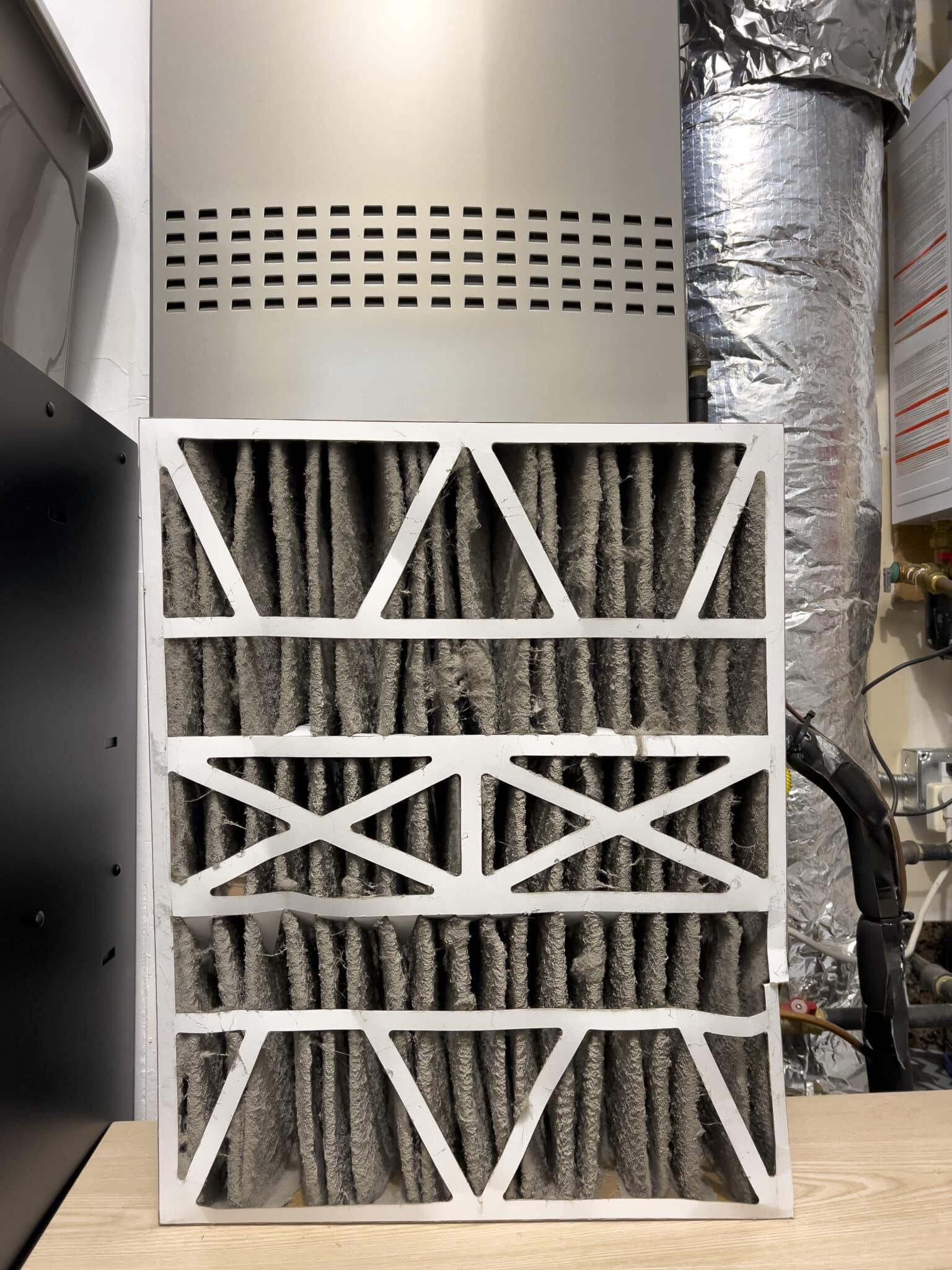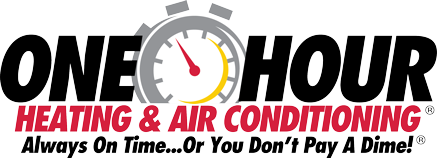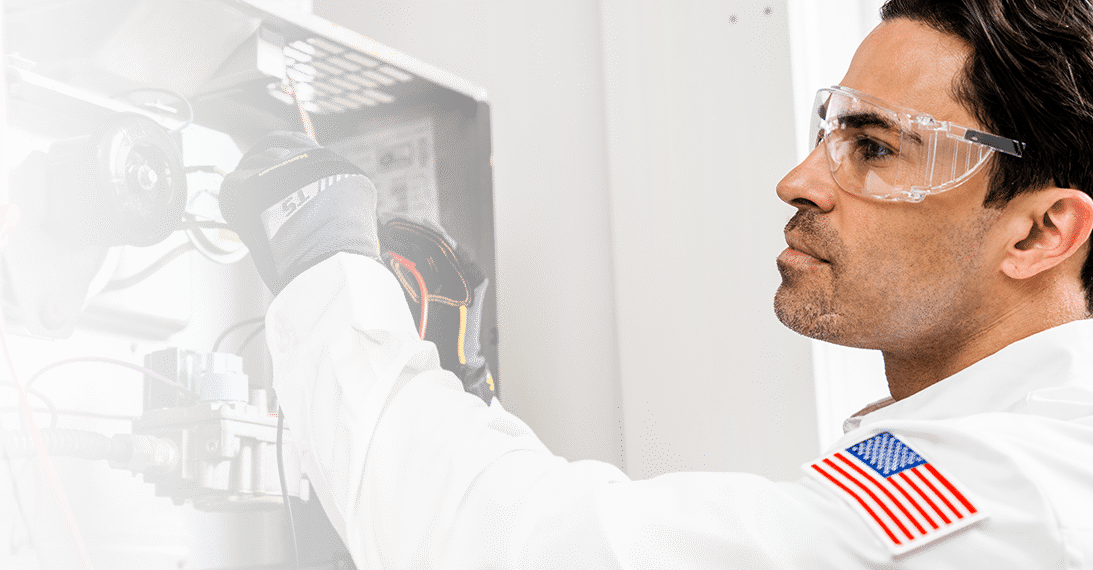A furnace needs regular care to work well and last longer. Change the filters every 1-3 months, get a pro to check it once a year, and keep vents clear. This can boost efficiency, prevent breakdowns, and even cut energy costs. With proper maintenance, your furnace could last up to 30% longer.
Why Furnace Maintenance Matters
Taking care of your furnace isn’t just about staying warm.
It helps prevent breakdowns, improves energy use, and keeps your home comfortable all winter.
If you skip maintenance, you risk costly repairs, high energy bills, and an uncomfortable home.
Regular heating system care can make your system last up to 30% longer and cut energy use by 10-15%.
That means lower bills and no stress about your heat failing when you need it most.
Simple tasks like cleaning parts, checking for wear, and making small fixes help your unit work better.
Routine heating tune-ups also catch small issues before they turn into big, expensive problems.
A neglected system can collect dust, clog filters, or have worn-out parts that hurt performance—leading to major headaches later.
With expert service from One Hour Heating & Air Conditioning of Central Texas, you can keep your system in top shape all season.
Bottom line?
Maintenance isn’t optional—it’s a must.
A little care now saves you from big problems later.
How Your Furnace Works
A heating unit isn’t just a metal box that blows hot air.
It’s a system that keeps your home warm.
The heat exchanger is key—it moves heat from burning gases to the air in your home.
If it cracks or breaks, this heating system won’t work well and could leak carbon monoxide.
Here’s how it works: When the thermostat senses the temperature has dropped, it tells the heating system to turn on.
The burners light up and make heat, which the heat exchanger absorbs.
Then, the blower fan pushes the warm air through the ducts, spreading heat throughout your home.
If your heating unit isn’t keeping up, a clogged air filter, blocked vents, or a faulty heat exchanger might be why.
Good airflow keeps the system running well.
Dust buildup or closed vents can make it work harder, leading to wear and tear.
That’s why it’s important to clean ducts and change filters often.
A well-kept heating unit runs better, lasts longer, and avoids breakdowns in winter.
Seasonal Furnace Maintenance Checklist
Before winter, make sure your furnace is ready.
Start by replacing the air filter to keep airflow strong and energy use low.
Check the thermostat to be sure it’s working and set right.
Look at vents and registers to make sure nothing is blocking the heat.
If you haven’t had a professional heating system tune-up, now is the time.
A pro can catch most issues before they become big problems.
Book an inspection before the cold hits.
Mid-season, keep an eye on your unit.
Listen for strange noises, check if some rooms feel colder than others, and watch for sudden spikes in energy bills—these could mean trouble.
Keep the area around the unit free from dust, and make sure nothing blocks the exhaust vent.
At the end of winter, get your furnace ready for the off-season.
Replace the filter again, clean the area around it, and check for any wear or damage.
If your heating system had a hard time keeping up this winter, think about upgrading before next season.
Regular maintenance keeps it running well, helps improve energy efficiency, and helps it last longer.

Changing and Cleaning Furnace Filters Regularly
A dirty filter makes your furnace work harder and lowers efficiency.
Changing it every 1-3 months keeps the air clean and helps your system run well.
This simple habit can boost energy efficiency by up to 15%, saving you money on bills and reducing strain on your heating system.
How Often Should You Change Your Filter?
It depends on filter type and home conditions.
Basic fiberglass filters should be changed monthly, while pleated ones last up to three months.
If you have pets, allergies, or a lot of dust in your area, check the filter more often.
Choosing the Right Filter
Not all filters are the same.
The MERV rating (Minimum Efficiency Reporting Value) shows how well a filter traps particles.
A MERV 8–13 filter is a good balance between air quality and airflow.
Want stronger filtration?
HEPA filters catch even finer particles but may need professional installation to keep airflow steady.
Why Clean Filters Help Your Furnace Last Longer
A clogged filter blocks airflow, making the blower motor work harder.
Over time, this can cause overheating, part failures, or even breakdowns.
Keeping filters clean helps it run smoothly and prevents expensive repairs.
If you live in Austin, TX, maintaining clean filters is especially important due to seasonal allergens and air quality concerns.
Keep Vents and Ducts Clean for Better Efficiency
Blocked vents and dirty ducts make your furnace work harder than it should.
This lowers efficiency and can even cause damage.
When airflow is restricted, your system strains to keep the right temperature, leading to wear and tear.
Blocked vents don’t just waste energy—they can cause serious issues.
Closed or blocked vents increase pressure in your ducts, which can crack the heat exchanger and lead to expensive repairs.
A cracked heat exchanger isn’t just bad for your heating unit—it can also be a safety risk.
To keep it running well, make sure all vents stay open and unblocked.
Move furniture, rugs, and curtains away so air can flow freely.
Dust and vacuum vent covers often to prevent buildup.
Ducts also need regular checks and cleaning.
Over time, dust, pet hair, and other debris collect inside, reducing airflow and affecting air quality.
A professional duct cleaning service, like the one from One Hour Heating & Air Conditioning of Central Texas, can clear out this buildup and improve airflow.
By keeping vents open and ducts clean, you’ll reduce strain on it, boost energy efficiency, and help your heating system last longer.
Keep Your Thermostat Settings in Check
Your thermostat settings affect how well your furnace runs in winter.
Small changes can save energy and help your system last longer.
For best results, keep your thermostat at 68°F when you’re home and awake, and lower it a few degrees when you’re asleep or away.
This can cut heating costs without making your home uncomfortable.
Don’t crank up the heat when it’s cold—your heating system warms at the same speed no matter the setting, and big changes make it work harder than needed.
A programmable thermostat makes temperature adjustments easy.
It lowers the heat when you’re out and warms your home before you return, which can save you up to 10% a year on heating costs.
Smart thermostats do even more by learning your habits and auto-adjusting for better efficiency.
If your home feels unevenly heated or your bills are higher than normal, your thermostat may not be working right.
An old unit can send wrong signals to your furnace, leading to uneven heat or longer run times.
If you notice these issues, One Hour Heating & Air Conditioning of Central Texas can inspect and upgrade your thermostat to keep your heating system running smoothly all winter.
Spotting and Fixing Small Furnace Problems Early
A well-kept furnace can last 15 to 20 years, but ignoring small issues can cut its life short.
Catching problems early helps avoid costly repairs and keeps your home warm all winter.
Signs Your Furnace Needs a Pro
If your heating system keeps turning on and off, makes strange noises, or doesn’t heat your home evenly, it may have a mechanical issue.
A sudden jump in energy bills could also mean it’s working too hard—often due to clogged filters, faulty sensors, or worn-out parts.
Fixing these early can save on expensive repairs later.
Why DIY Furnace Repairs Can Be Dangerous
You can handle easy tasks like changing filters, but bigger fixes can be risky.
Heating units have gas lines, electrical parts, and heat exchangers that need expert care.
A bad repair job could cause gas leaks, electrical fires, or carbon monoxide poisoning.
When to Call a Professional
If you notice odd smells, loud noises, weak airflow, or uneven heating, it’s time to call a pro.
The team at One Hour Heating & Air Conditioning of Central Texas can find and fix problems fast before your system fails.
Whether you’re in Austin, TX, or nearby, don’t wait—small issues can turn into big, costly replacements.
Keep Air Moving for a Warmer Home
Even a great furnace won’t work well if air isn’t flowing right.
Good airflow keeps temperatures steady and takes the pressure off your HVAC system.
Keep Vents Open for Even Heat
Blocked vents create hot and cold spots.
Make sure all vents stay open and clear of furniture or rugs.
This helps warm air spread evenly and keeps your heating system from overworking.
Use Ceiling Fans to Spread Warm Air
Ceiling fans aren’t just for summer.
Set them to spin clockwise on low in winter.
This pushes warm air down, making rooms feel cozier and cutting heating costs.
Seal Drafts to Keep Heat In
Gaps around windows and doors let warm air escape, forcing it to work harder.
Use weather stripping or caulk to seal leaks.
For drafty rooms, try a door draft stopper to keep the heat where it belongs.
By improving airflow, your home will stay warmer, and it will work more efficiently this winter.
If you’re still having issues, a pro from One Hour Heating & Air Conditioning of Central Texas can check your ductwork in Austin, TX.
Get a Professional Furnace Tune-Up Every Year
A yearly tune-up isn’t just a good idea—it’s a must.
It keeps your system running well, helps avoid costly repairs, and ensures your heating unit is safe and efficient.
During a tune-up, an HVAC tech checks key parts like the heat exchanger, burners, and blower motor.
They clean out dust and debris, look for worn-out parts, and make sure everything is working as it should.
This kind of upkeep can catch many problems before they turn into big repairs, so your system won’t fail when you need it most.
Regular maintenance also means lower energy bills and better indoor comfort.
A well-tuned unit spreads heat evenly, cutting down on those annoying cold spots.
It also reduces wear and tear, helping your system last longer so you don’t have to replace it too soon.
Picking a trusted HVAC provider is just as important as the tune-up itself.
If you need dependable maintenance in Austin, TX, the pros at One Hour Heating & Air Conditioning of Central Texas are ready to help.
Their skilled techs do thorough inspections to keep your system in great shape all winter.
Don’t wait for your heating unit to struggle—book your annual tune-up today and stay warm worry-free.
Mistakes That Wear Out Your Furnace Too Soon
This is made to last, but small mistakes can cut its life short.
One big one? Messing with the thermostat too much.
Constantly turning the heat up and down makes your heating system work harder than it should, leading to wear and tear.
Instead, keep the temperature steady and let it do its job.
Skipping maintenance is another big mistake.
A dirty furnace clogs up with dust, blocking airflow and reducing efficiency.
Worse, small issues—like a worn-out belt or misaligned burner—can turn into costly repairs.
A yearly check-up, like those from One Hour Heating & Air Conditioning of Central Texas, helps catch these problems early.
Also, don’t ignore warning signs.
Weird noises, odd smells, or uneven heating aren’t just annoying—they’re signs of trouble.
Fixing them early can save you from a full breakdown.
Lastly, seal air leaks around windows and doors.
Letting heat escape makes it work harder, raising bills and wearing it out faster.
In fact, sealing leaks can improve heating efficiency and help your heating unit last longer.
A little effort now keeps it running smoothly for years.
Stay ahead of problems, and your heating system will thank you.
When to Replace Your Furnace
No heating unit lasts forever.
If yours can’t keep up, makes odd noises, or raises your energy bills, it may be time for a new one.
Here’s how to know when to upgrade.
Signs Your Furnace Is Wearing Out
Most heating systems last 15-20 years with good care.
If yours is in that range and keeps breaking down, it’s probably near the end.
Other warning signs include uneven heating, strange smells, loud rattling or banging, and a yellow pilot light instead of blue.
A failing unit also means higher heating bills because it has to work harder.
Repair or Replace? What Makes Sense?
Fixing an old heating system may seem cheaper, but at some point, it’s just throwing money away.
A simple rule: If repairs cost more than 50% of a new system, it’s time to replace it.
Plus, older models are less efficient, so you’re likely overpaying for heat.
Choosing a More Efficient Heating Unit
New models, especially ENERGY STAR® options, are more efficient, which can help reduce heating costs over time.
When picking a new unit, look at the size, fuel type, and AFUE rating to get the right fit for your home.
If you need help with a heating system replacement in Austin, TX, trust One Hour Heating & Air Conditioning of Central Texas to find and install the best system for you.

FAQs
How often should I get my furnace checked by a pro?
Get it checked once a year, ideally in the fall before winter hits. This keeps it running well and helps catch small problems before they turn into costly repairs.
What are the signs that my heating system needs fixing?
Look out for weird noises, weak airflow, frequent on-and-off cycles, uneven heating, or higher energy bills. If you notice any of these, call a pro to check it out.
Can a dirty filter really mess up my furnace?
Yes! A clogged filter blocks airflow, making it work harder. This raises energy bills, lowers efficiency, and can even cause system breakdowns if not replaced.
Is upgrading to a programmable thermostat a good idea?
Yes! A programmable thermostat adjusts the temperature based on your schedule, cutting energy waste and improving efficiency.
When should I replace my furnace instead of fixing it?
If it is over 15 years old, needs repairs often, or struggles to keep your home warm, it may be smarter to invest in a new, energy-efficient model. Consider consulting an expert in Austin, TX to explore the best replacement options.





